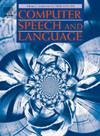社交媒体分类的跨模态证据融合网络
IF 3.4
3区 计算机科学
Q2 COMPUTER SCIENCE, ARTIFICIAL INTELLIGENCE
引用次数: 0
摘要
人类在社交网络上的活动可以反映大众对各种事件的态度,对经济发展和社会进步具有重要意义。在深度多模态技术发展的推动下,许多研究都集中在社交媒体中的各种多模态任务上。然而,现有的多模态方法对可靠模态和不可靠模态一视同仁,影响了基于社交媒体的多模态分类的效率。因此,需要一种可靠的多模态融合方法。本文提出了一种基于主观逻辑理论的跨模态证据融合网络(CEFN),将不确定性估计纳入多模态融合过程。CEFN直接对不确定性建模,并通过将编码器的输出视为主观意见来学习更可靠的表示。为了减少随机噪声带来的语义不确定性,对每个单峰编码器都采用了动量模型。这些单模编码器对齐由动量模型产生的伪视图,以减轻噪声的影响。此外,CEFN引入了一个冲突损失函数,以促进从包含对立观点的图像-文本对中进行表示学习。这种损失捕获了跨模态冲突的不确定性,从而提高了每个编码器的特征提取能力。在三个真实社会媒体数据集上的实验结果表明,CEFN优于相关的多模态网络。本文章由计算机程序翻译,如有差异,请以英文原文为准。
Cross-modal evidential fusion network for social media classification
Human activities on social networks can reflect the attitudes of the masses towards various events and are important for economic development and social progress. Many studies have focused on various multimodal tasks in social media, driven by the development of deep multimodal techniques. However, existing multimodal methods treat both reliable and unreliable modalities equally, which affects the efficiency of multimodal classification underlying social media. Therefore, a reliable method for multimodal fusion is required. This study presents a novel cross-modal evidential fusion network (CEFN) based on the subjective logic theory to incorporate uncertainty estimates into the multimodal fusion process. CEFN models uncertainty directly and learns more reliable representations by treating the outputs of encoders as subjective opinions. To reduce semantic uncertainty caused by random noise, momentum models are employed for each unimodal encoder. These unimodal encoders align the pseudo-views generated by the momentum models to mitigate the effects of noise. In addition, CEFN introduces a conflict loss function to facilitate representation learning from image-text pairs containing opposing views. This loss captures uncertainty from cross-modal conflicts to improve the feature extraction capability of each encoder. Experimental results on three real-world social media datasets show that CEFN outperforms related multimodal networks.
求助全文
通过发布文献求助,成功后即可免费获取论文全文。
去求助
来源期刊

Computer Speech and Language
工程技术-计算机:人工智能
CiteScore
11.30
自引率
4.70%
发文量
80
审稿时长
22.9 weeks
期刊介绍:
Computer Speech & Language publishes reports of original research related to the recognition, understanding, production, coding and mining of speech and language.
The speech and language sciences have a long history, but it is only relatively recently that large-scale implementation of and experimentation with complex models of speech and language processing has become feasible. Such research is often carried out somewhat separately by practitioners of artificial intelligence, computer science, electronic engineering, information retrieval, linguistics, phonetics, or psychology.
 求助内容:
求助内容: 应助结果提醒方式:
应助结果提醒方式:


